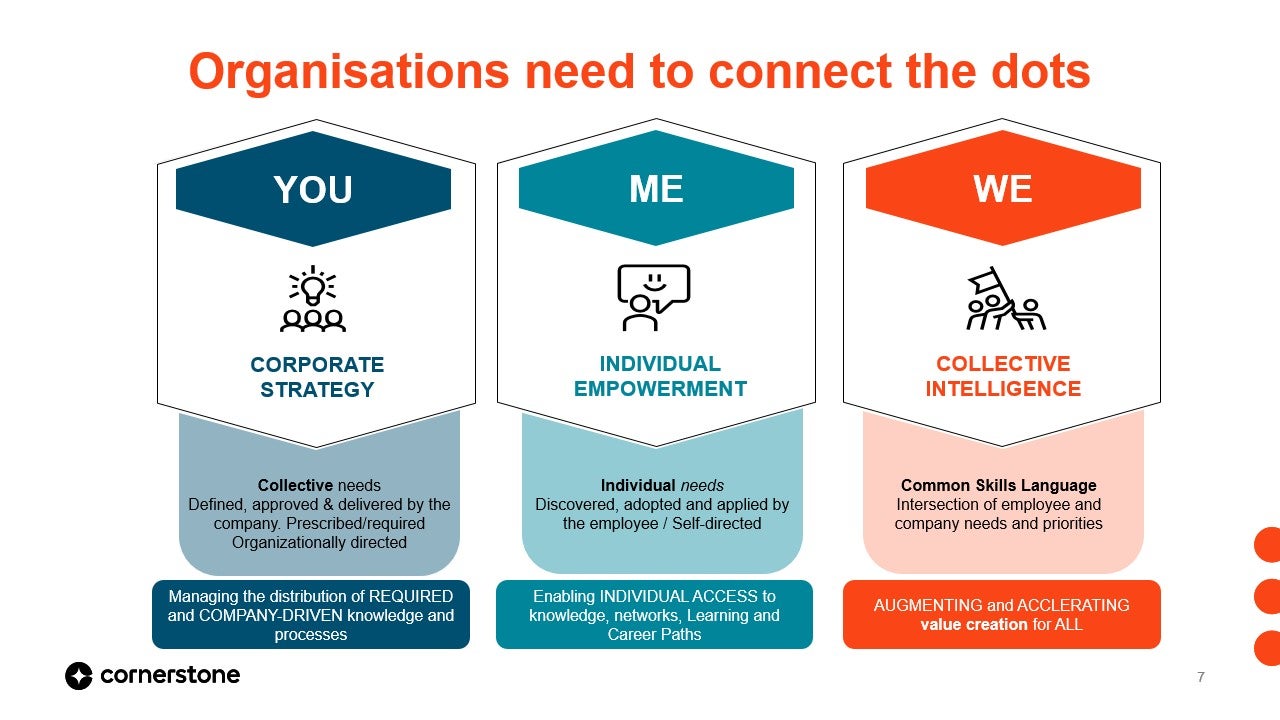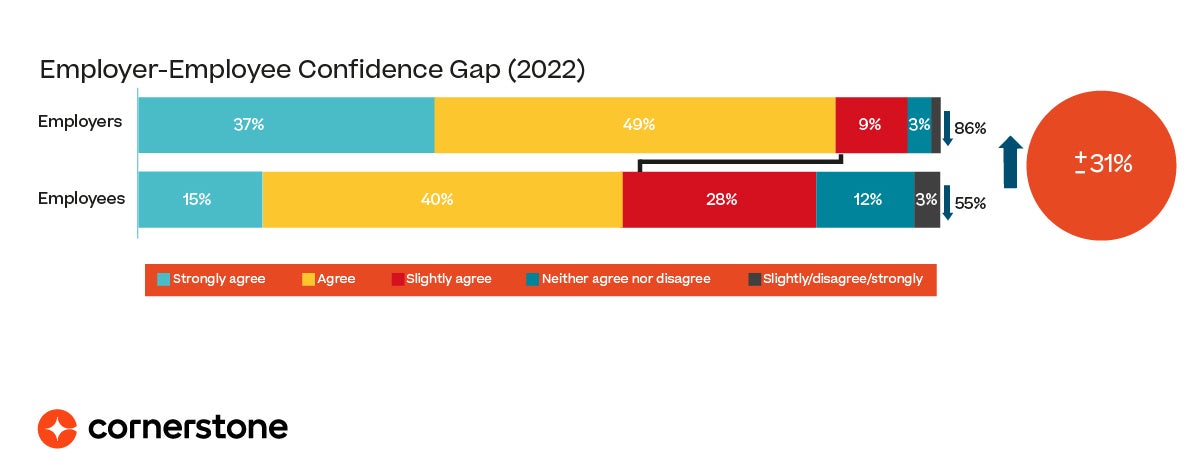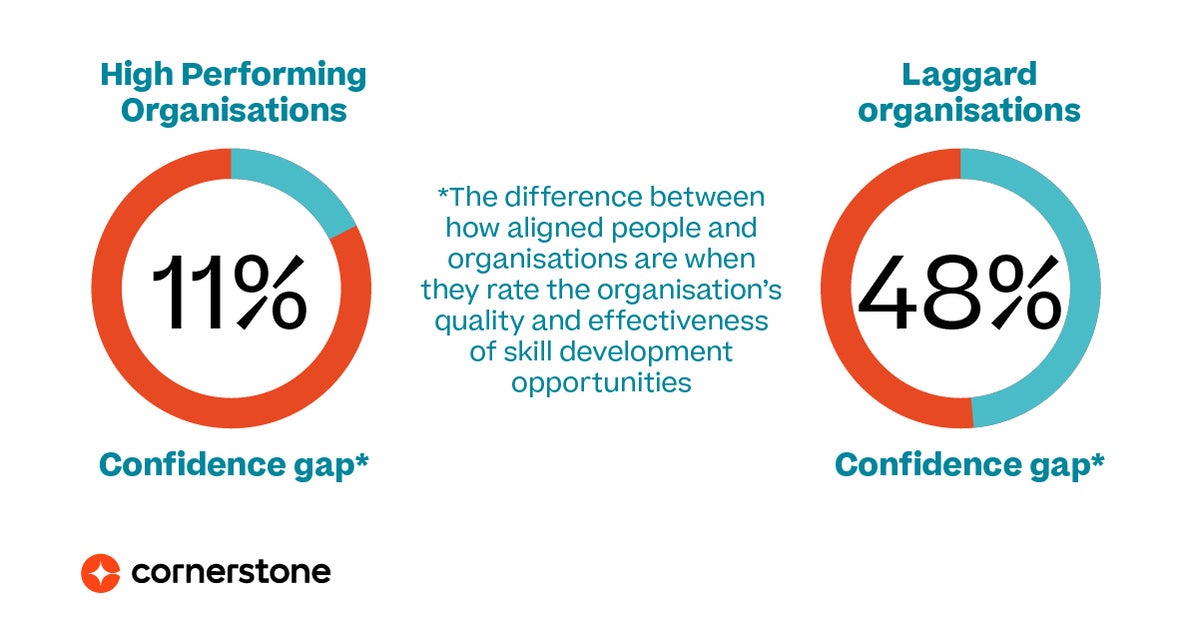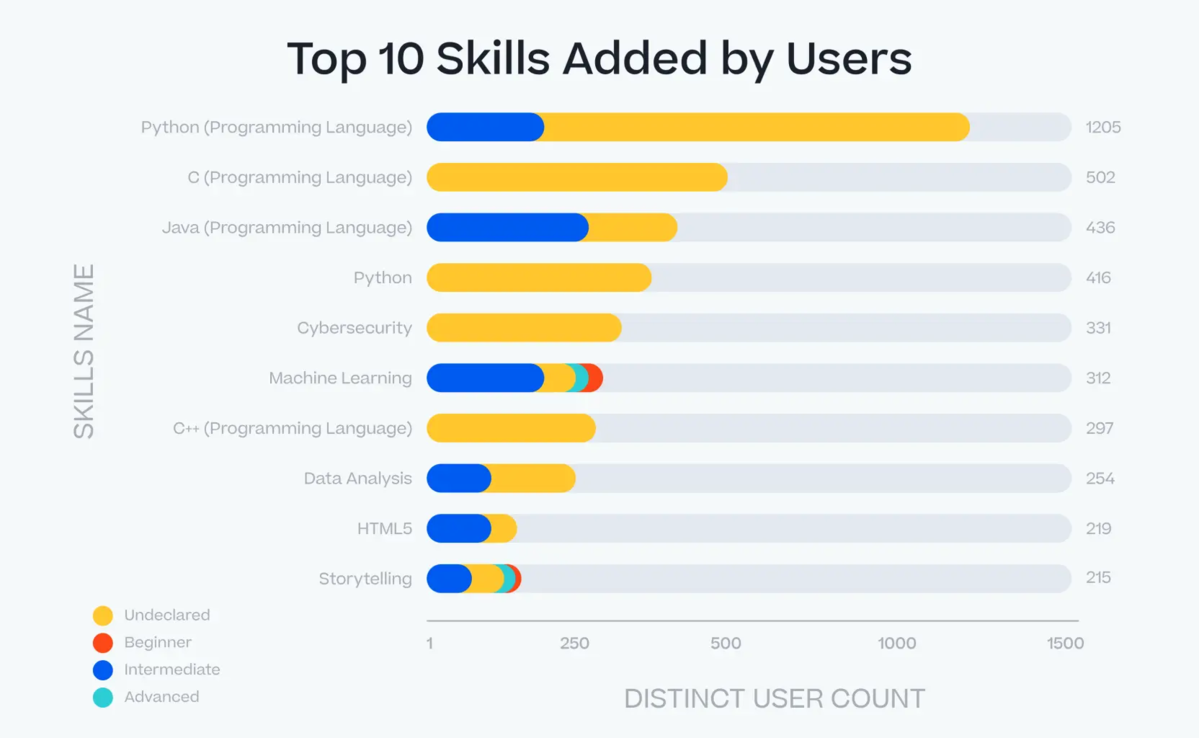
Today’s world is incredibly unpredictable. Think of all the upheavals businesses have had to weather in recent years – from Brexit, to Covid-19, the Great Resignation and more. Even before this, there was the 2008 financial meltdown.
A company’s workforce is its key to surviving such challenging periods. If an organisation has unhappy people, high turnover and poor motivation, it will find itself in choppy waters.
Striking the balance of “you”, “me”, “we”
So what do employees specifically want when it comes to learning and the broader talent experience? Put simply, a lot.

For one, they don’t want to feel as though talent is something that is being “done to them”. Rather, they want to feel like all the talent activities that exist are there to help nurture their growth and engagement. Employees want to feel like the experience has been designed for and personalised to them and their needs, and evolves as they evolve.
They also want understanding and a measure of control over their own career direction and progression. They want to feel like they can share and evaluate their own expertise, knowing they have a pathway for the future. Alongside all this, they want to feel connected to the purpose of the business.
To juggle all of this, a balance needs to be struck. This is a balance between what the employee wants and needs, and what is good for the overall organisation. This is a balance of the “you”, the “me” and the “we”. Let’s break these components down.
• The you: the corporate strategy. The organisation defines its collective talent needs to reach its organisational goals and manages the distribution of required and prescribed knowledge as well as defines HR processes.
• The me: individual empowerment. Answering individual needs and providing an engaging experience for employees to discover and access knowledge, networks, learning and career pathways in a self-directed way.
• The we: collective intelligence. Using a common skills language, this is the intersection of employee and company needs and priorities – helping augment and accelerate innovation. This in turn, drives maximum retention, engagement and ultimately productivity.
Make learning as constant as the North Star
Learning provides a critical business benefit, as it can be a strategic agent of change. Learning leads to curiosity, leads to creativity, leads to discovery, disruption and innovation.
As such, a company with employees who are constantly learning will be better placed to weather unstable and unpredictable times – Cornerstone’s recent People Research Lab 2023 Trends report highlighted the importance of agility and resilience, as organisations which have been leading the way are the ones who challenge assumptions, reset the way they work, enhance the employee experience and bridge skills gaps.


However, it’s also integral to employees. Put simply, learning and talent experience are synonymous today – employees expect it to be rolled into their day-to-day working lives. They want to be continually developing themselves, growing professionally and collaborating with colleagues as they learn together.
This is especially crucial to younger employees. For instance, a survey from a 2022 LinkedIn found that, globally, 75 per cent of Gen Zs would consider changing roles because of the relevance and quality of their workplace’s learning and development programme. Additionally, more than half (54 per cent) said they had left a job because of the training and development prospects not being what they expected.
But these younger workers are the future, so we need to keep it in mind. As such, the consequence of failing to incorporate a strong learning culture into the employee experience is evident. And with trends such as “quiet quitting” and “resenteeism” on the rise, organisations need to place L&D front of mind to build a strong, happy workforce.
Focus on internal mobility
Finally, organisations should also be laser-focused on improving the internal mobility of their workforce. Why? Because it is hugely important to employees. In fact, according to Cornerstone’s 2023 research on talent mobility trends, 73 per cent of employees want to know about career opportunities inside their organisation, and 47 per cent would be more satisfied if they had more opportunities to explore careers internally. As such, facilitating this could mean the difference between high turnover rates and high retention rates.
Cornerstone’s recently launched Opportunity Marketplace is addressing the above challenges and redefining workforce agility and talent mobility. It offers customers a fully connected learning ecosystem, with a unified user experience and AI-powered talent experience. It is a holistic solution that fosters a more engaged, self-developing workforce and better positions organisations for longevity and success – no matter what might lie ahead.

Of course, talent mobility is one part of the wider strategy to empower a future-ready workforce. Organisations need a solution that can improve workforce planning, adapt to quickly changing strategic priorities, as well as market shifts, and create a work environment of growth, resilience and agility. This enables employees to be aligned with the success of the organisation: a rewarding talent strategy for all. Using the power of AI, organisations can re-invigorate their learning and development experience, make relevant content accessible anytime and anywhere, accelerate talent and career movement, and make skills the universal language of growth and success.








